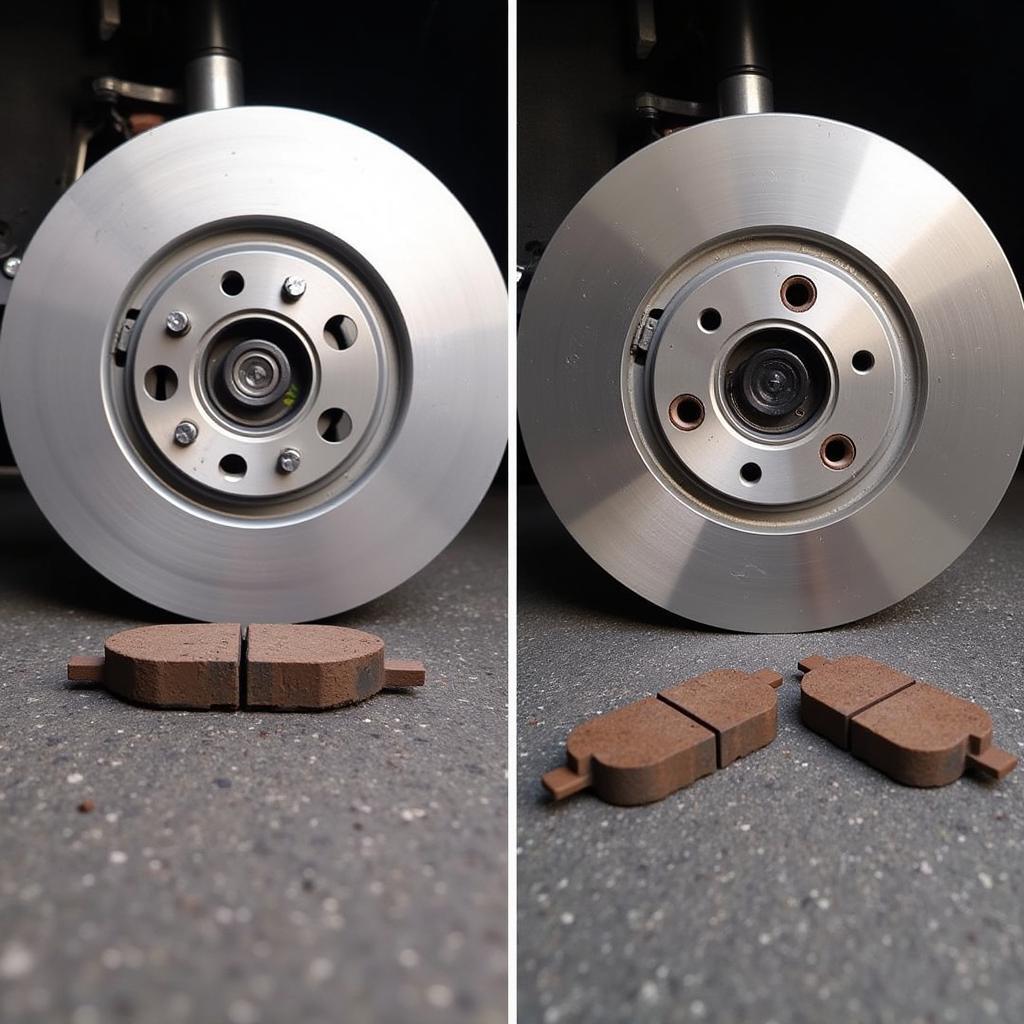If the brake system warning light has illuminated on your 2016 Honda Civic’s dashboard, it’s crucial not to ignore it. This light serves as a critical safety alert, indicating a potential issue within your vehicle’s braking system that requires immediate attention. While it can be alarming to see any warning light, understanding the common causes of this particular light in a 2016 Honda Civic can help you take the right steps towards resolution. This article will guide you through potential reasons behind the brake system warning light, troubleshooting tips, and when to seek professional assistance.
Common Causes of a Brake System Warning Light
Several factors can trigger the brake system warning light in your 2016 Honda Civic. Here are some of the most prevalent culprits:
-
Low Brake Fluid: One of the most common and straightforward reasons for the warning light is low brake fluid. Brake fluid is the lifeblood of your braking system, transmitting the force from your foot on the pedal to engage the brakes. Over time, brake pads wear down, requiring more fluid to be displaced for the same braking action. If the fluid level drops too low, the warning light will illuminate.
-
Worn Brake Pads: Speaking of brake pads, they are designed to wear down gradually with use. As they reach the end of their service life, the brake system warning light may illuminate to alert you that it’s time for a replacement.
-
Faulty Brake Light Switch: The brake light switch is responsible for activating your brake lights when you press the brake pedal. A malfunctioning switch can not only prevent your brake lights from functioning correctly but also trigger the brake system warning light.
-
ABS Issue: Modern vehicles like your 2016 Honda Civic are equipped with an Anti-lock Braking System (ABS). If the ABS module or a related component experiences a fault, it can trigger the warning light.
-
Parking Brake Engaged: While seemingly obvious, sometimes the simplest explanation is the most likely one. If the parking brake is even slightly engaged, it can trigger the warning light. Make sure the parking brake is fully released before troubleshooting further.
 2016 Honda Civic Brake Fluid Reservoir
2016 Honda Civic Brake Fluid Reservoir
Troubleshooting Tips
Before heading straight to the mechanic, there are a few simple checks you can perform yourself:
- Check the Parking Brake: As mentioned earlier, ensure the parking brake is fully disengaged.
- Inspect Brake Fluid Level: If you’re comfortable doing so, carefully check the brake fluid level in the reservoir. If the fluid level is low, adding the correct type of brake fluid might temporarily resolve the issue, but you’ll still need to investigate the underlying cause of the fluid loss.
- Consult Your Owner’s Manual: Your Honda Civic’s owner’s manual provides valuable information specific to your vehicle, including troubleshooting tips for warning lights.
When to Seek Professional Help
While some causes of the brake system warning light may be simple to address, it’s crucial to remember that brakes are a critical safety system. If you are uncertain about any aspect of inspecting or addressing a brake-related issue, it’s always best to err on the side of caution and consult a qualified mechanic.
Furthermore, issues like faulty ABS modules, brake light switches, or significant brake fluid leaks typically require professional diagnosis and repair. Attempting to fix these issues yourself without the proper knowledge and tools could be dangerous and potentially lead to more costly repairs down the road.
 Worn Brake Pads on a 2016 Honda Civic
Worn Brake Pads on a 2016 Honda Civic
Expert Insight
“Never ignore the brake system warning light,” advises Sarah Jones, a seasoned automotive technician with over 15 years of experience specializing in Honda vehicles. “Brakes are your vehicle’s most crucial safety feature. Even if the issue seems minor, it’s always best to have it checked by a professional to ensure your safety and the safety of others on the road.”
Conclusion
Addressing the brake system warning light on your 2016 Honda Civic promptly is essential for your safety. By understanding the common causes, performing some basic troubleshooting, and knowing when to seek professional help, you can ensure your vehicle’s braking system remains in optimal condition, giving you peace of mind every time you hit the road. Remember, a well-maintained braking system is crucial for preventing accidents and ensuring a safe driving experience.
If you’re looking for guidance on resetting a parking brake warning in your 2016 Honda Civic, you can find helpful information in our guide: 2016 honda civic reset parking brake warning.
FAQs
1. Can I drive my Honda Civic with the brake system warning light on?
It is strongly advised against driving with the brake system warning light illuminated. This light indicates a potential issue with your brakes, and continuing to drive could compromise your safety.
2. How often should I have my brake fluid checked?
It’s generally recommended to have your brake fluid checked at least once a year or as part of your regular vehicle maintenance schedule.
3. How long can I drive on worn brake pads?
Driving on worn brake pads is dangerous. If you suspect your brake pads are nearing the end of their life, have them inspected and replaced by a qualified mechanic as soon as possible.
4. How much does it cost to replace a brake light switch?
The cost of replacing a brake light switch varies depending on the make and model of your vehicle and labor rates in your area. Consult a mechanic for an accurate estimate.
